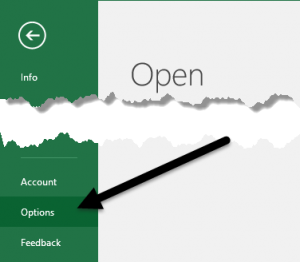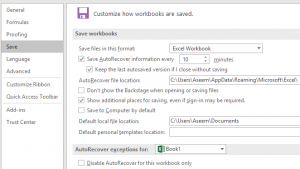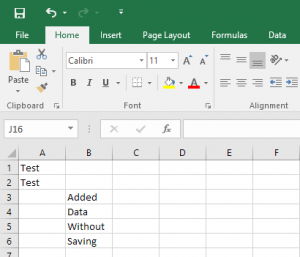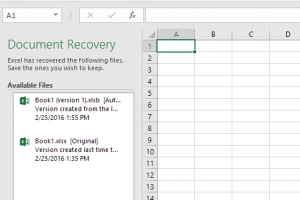It’s always frustrating when you lose something important you were working on because you didn’t save a document properly. This happens all the time with Excel and Word.
Fortunately, Microsoft has added many features in the last couple of versions that help reduce the chances of losing data due to crashes, power outages, accidental deletions, etc. One feature is called AutoRecover.
In this article, I’ll explain about how to configure Excel so that your data is as safe as possible. I would also like to mention that the latest versions of Office allow you to save documents directly to OneDrive, which is a good option to consider because you’ll still be able to access your work even if your hard drive fails.
Excel AutoRecover
The Auto Recover feature is turned on by default and simply saves your file or document automatically into a temporary location after a set time interval. To view the AutoRecover settings, click on File and then Options.

Click on Save in the left-hand menu and you’ll see the AutoRecover option under Save Workbooks.

By default, AutoRecover information is saved every 10 minutes. Moreover, Excel has to be idle for 30 seconds before the data will be saved. So how does it work? Basically, let’s say you have a worksheet like the one below and you have it saved.

Now imagine I add the following data to the Excel sheet and wait about 10 minutes without saving my document. Since the AutoRecover interval is set for 10 minutes, you need to wait at least that long for the data to be saved.

For example, I simulated an Excel crash by opening the task manager and stopping the Excel process. After that, I reopened Excel and immediately saw an option called Show Recovered Files.

If you click on that, it will bring up a list of Excel files that can be recovered. In my case, it had the original file, which had data in just A1 and A2, and it also had the AutoRecovered file, which included the data that I had not saved to disk.

Clicking on any of the items in the list will open another instance of Excel showing the data in that particular file. Overall, this is a really useful feature for those times when you didn’t save all your work, but Excel ends unexpectedly.
The major downside to this feature is that the AutoRecover data is stored on the same hard drive as your file, so if something happens to your hard drive, everything will be gone. You can change the location in the settings above to a separate hard drive or even to a network location, which I highly recommend.
Note that AutoRecover information is also deleted automatically by Excel in the following circumstances:
- You save the file manually or by using File – Save As .
- You close the file or quit Excel (whether you save the file or not)
- You turn off AutoRecover completely or for just the workbook
So basically, whenever you save the file, it gets rid of the AutoRecover data. In addition, if you manually quit Excel and choose not to save the data, it will delete the AutoRecover data. Just keep that in mind when using this feature. If you are a heavy Excel user, I would suggest setting the AutoRecover interval to something like 2 or 3 minutes instead of 10.

Recent Comments